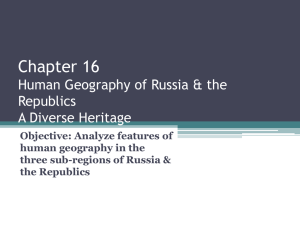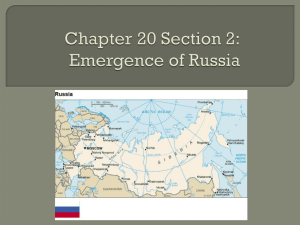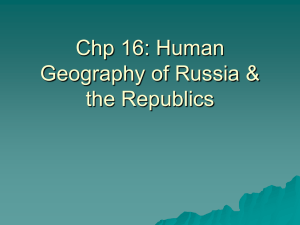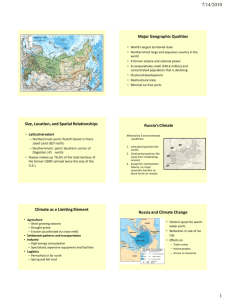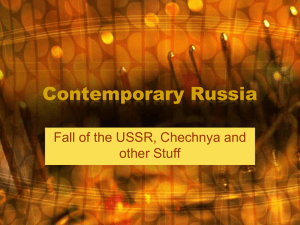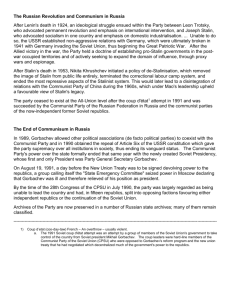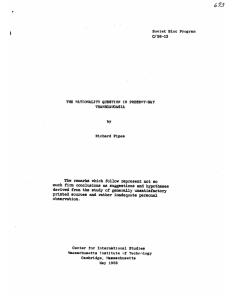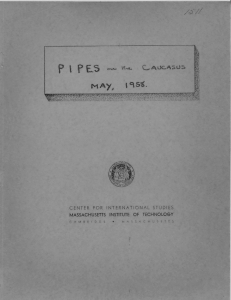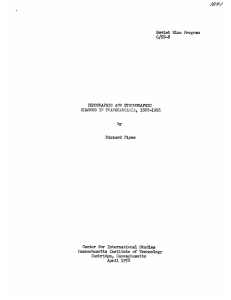File
advertisement
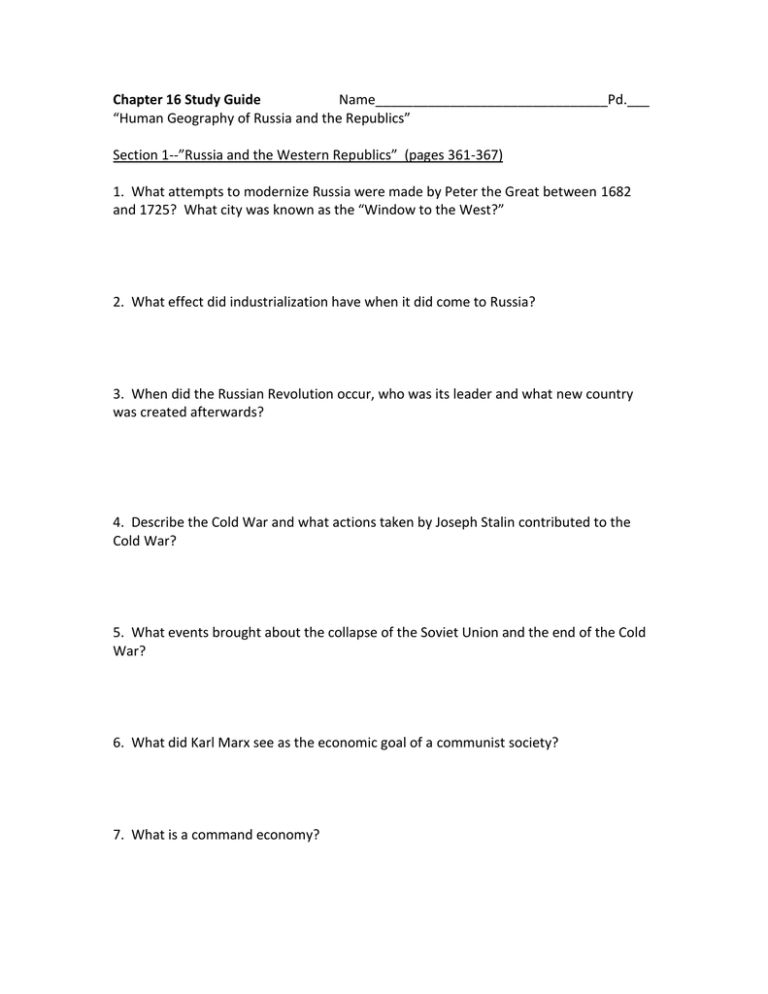
Chapter 16 Study Guide Name_______________________________Pd.___ “Human Geography of Russia and the Republics” Section 1--”Russia and the Western Republics” (pages 361-367) 1. What attempts to modernize Russia were made by Peter the Great between 1682 and 1725? What city was known as the “Window to the West?” 2. What effect did industrialization have when it did come to Russia? 3. When did the Russian Revolution occur, who was its leader and what new country was created afterwards? 4. Describe the Cold War and what actions taken by Joseph Stalin contributed to the Cold War? 5. What events brought about the collapse of the Soviet Union and the end of the Cold War? 6. What did Karl Marx see as the economic goal of a communist society? 7. What is a command economy? 8. How did Soviet planning extend the industrial model to the countryside? 9. What was the effect of the command economy? 10. What is the ethnic and religious makeup of Russia and the Western Republics? 11. Who are some notable Russian cultural contributors? (artists, authors, etc.) 12. In what way did Soviet rule stifle artistic expression? What was the only accepted style of art in the USSR? 13. How has Russian society changed since the end of Communist rule? 14. What caused the accident at Chernobyl? 15. What were its effects? Section 2--”Transcaucasia” (pages 370-374) 16. The area of Transcaucasia lies between what two bodies of water? 17. What factors have contributed to the use of Transcaucasia as a migration route? 18. What has been the effect on Transcaucasia’s culture and religion? 19. How has religious tension led to conflict in this region? 20. When did Russia come to control Transcaucasia and why do you think control of this area was important? 21. What are Transcaucasia’s main agricultural products? 22. What industry is most important to this region? 23. Why is it important to determine whether the Caspian Sea is a lake or an inland sea? 24. What was the effect of Soviet rule on education in Transcaucasia? Section 3--”Central Asia” (pages 375-379) 25. What was the Silk Road? 26. When and why did traffic on the Silk Road slow? 27. What was the “Great Game” and which side won? 28. Describe the effects of nuclear testing in Central Asia? 29. What resource is at the heart of the “New Great Game” and what might this mean for the people of Central Asia? 30. How did Soviet rulers draw political boundaries in Central Asia in such a way as to prevent opposition to their rule? 31. In what way are language and religion unifying forces in Central Asia? 32. What is a yurt? 33. How are the Kyrgyz people trying to preserve their nomadic tradition?

